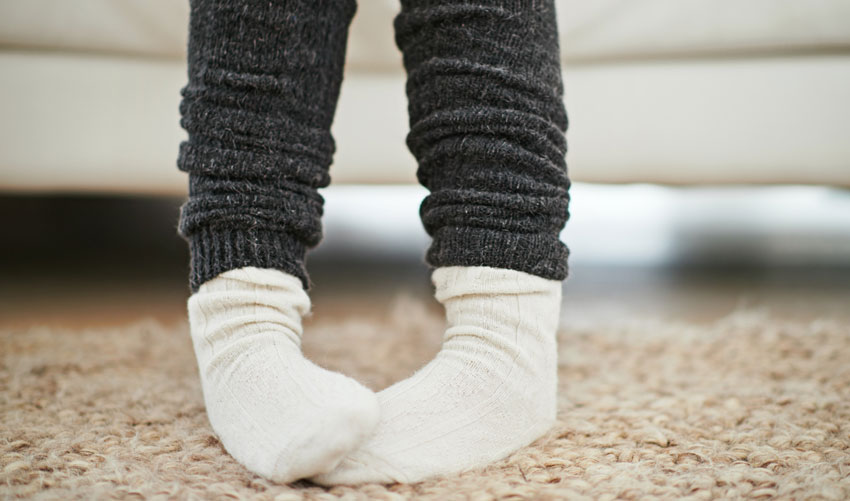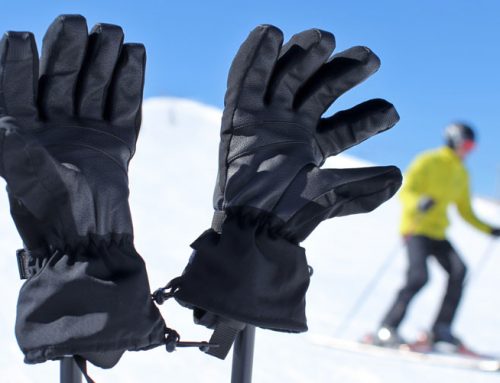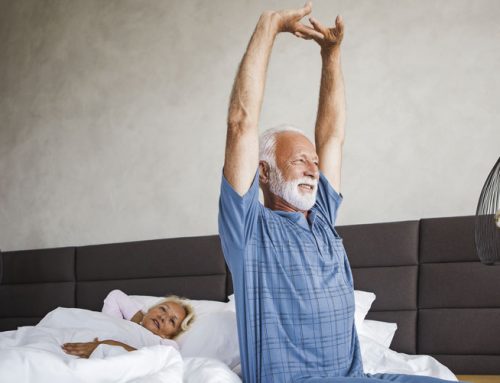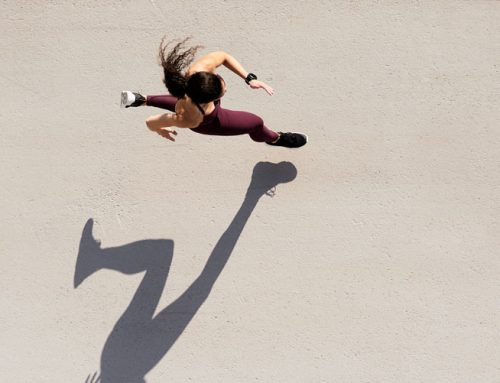Are your feet often cold regardless of the temperature outside? Do you find that you’re constantly putting on socks or slippers? Do you have cramps, swelling or pain in your legs or calves? While our bodies are designed to regulate our temperature, not everyone’s circulation is created equal. It’s a fairly common problem, but it’s something you must actively combat. Here is the complete guide to keeping your feet warm if you suffer from poor circulation.
Table of Contents
What are the symptoms of poor circulation?
As a kid, you likely experienced the uncomfortable feeling of a loss in circulation at one point or another. Perhaps you sat in one position for too long and experienced your foot “falling asleep.” Then, as you began to wiggle it, you felt the tingling in your extremities of a nerve traffic jam. The sensation of pins and needles is never a fun one, and it’s often the first memory for most of poor circulation.
The symptoms of poor circulation include:
- Tingling
- Numbness
- Throbbing or stinging in your limbs
- Pain
- Muscle cramps
Furthermore, if you have an underlying condition that is causing your poor circulation, you may have additional symptoms that correspond to that specific condition.
What are the causes of poor circulation?
Circulation is incredibly important in the body as this system is responsible for sending blood, oxygen, and nutrients to every part of your body. When blood flow is reduced, you can experience the symptoms of poor circulation. Poor circulation is most common in the limbs and is often the result of other underlying causes, which can be serious. These conditions include…
Peripheral artery disease
Also known as PAD, this condition can lead to poor circulation in your legs because it narrows your blood vessels and arteries. Over time, your blood flow will be reduced in your extremities. The reduced blood flow and plaque in your carotid arteries can ultimately result in a stroke or heart attack once they build up. Those who smoke are often at a higher risk for PAD.
Blood clots
Blood clots block the flow of blood (either partially or entirely). While they can develop anywhere in the body, clots often develop in the arms or legs. Blood clots can cause strokes or other serious problems. If discovered and treated, then no serious harm will come from them.
Varicose veins
Varicose veins are enlarged veins that are caused by valve failure. They are often found on the back of the legs and appear gnarled and engorged. Because damaged veins can’t move blood as efficiently, poor circulation often results. They are more common in women as well as people who are overweight or obese. You may be genetically predisposed to varicose veins if other individuals in your family have them.
Diabetes
Diabetes impacts circulation in certain parts of your body. It may cause cramping in your legs and pain in your calves, thighs or buttocks. People with advanced diabetes often have difficulty detecting their poor circulation due to the fact that diabetic neuropathy can cause reduced sensation to extremities.
Obesity
Because carrying out additional weight puts a burden on your body, those who are obese may find that they have issues with circulation. Being overweight in any form puts you at risk for varicose veins and blood vessel problems. You may experience circulation issues as a result.
Raynaud’s disease
If you’re experiencing chronic cold hands and feet, then one possible condition is Raynaud’s disease. This occurs when the small arteries in your hands and toes narrow. This causes them to move blood less efficiently, which causes you to have poor circulation. The symptoms of Raynaud’s are most predominant in cold temperatures and during stressful times. You may also experience symptoms in your lips, ears, nose, and nipples. Women and individuals living in cold climates are more likely to contract this disease.
Does poor circulation have to be serious?
It’s also important to note that poor circulation doesn’t always have a serious underlying cause. There are less serious factors that can result in poor circulation. However, if you happen to have symptoms that result in poor circulation, don’t hesitate to bring it up to your doctor. When you have poor circulation, it means that parts of your body fail to receive adequate blood flow which it needs to function properly. This can lead to complications and some life-threatening events (strokes, heart attacks, etc.). By treating the issue at its source, you can help prevent this. Your doctor can help advise you on the best course of action and get you treatment for any underlying condition that may impact your health.
How do you prevent poor circulation?
Certain behaviors can put you at risk for poor circulation. Thus, changing unhealthy behaviors can help you to manage their resulting medical conditions, preventing poor circulation altogether. Here’s what you need to know.
- Stop smoking cigarettes. Smoking increases the risk of developing conditions that cause poor circulation. It interferes with your blood flow, damages your blood vessels, and causes plaque to build up in your veins. Together, this puts you at risk for cardiovascular disease, strokes, and heart attacks.
- Monitor your blood pressure and cholesterol. Irregular blood pressure and cholesterol can complicate your body’s ability to regulate circulation. Ensuring that these two factors stay in a healthy range will help you keep your circulation on track.
- Exercise regularly. When you exercise, you increase your blood flow. You get your blood pumping, and you flush the blood through your arteries. This can be a fantastic natural way to boost your circulation if you find that it’s constantly an issue.
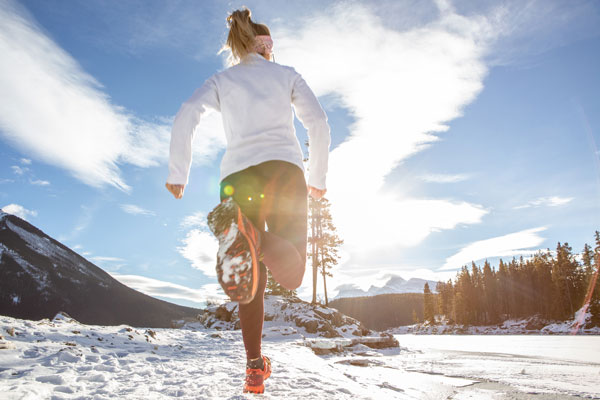
- Avoid extensive periods of immobility. Extensive periods of immobility can put immense pressure on your veins. If you have a job that keeps you sedentary for hours in the day, be sure to take breaks to stretch and get exercise. Go for walks and get on your feet at least every hour. Just a little bit of movement can prevent discomfort and cramping.
- Elevate your legs. By elevating your legs, you’re helping to take the pressure off of your veins. When you stand or sit for a long period of time, you’re putting pressure on your veins. This can have a serious impact and can be exacerbated if you’re overweight. In addition to alleviating the pressure, you also create a natural flow because the natural flow of blood becomes much easier if your legs are elevated. Your veins put in extra effort to flow back towards your heart. However, when you elevate your legs at least 6 inches above your heart, you help to aid it. Doing this will also help to reduce inflammation. Here are some tips and tricks to make sure you’re doing it correctly.
- Raise your legs at least 6 inches above your heart.
- Elevate them at least 3 times a day.
- Keep them up for at least 15 minutes
- Make sure you do it on a soft surface or use cushions. Using a table or a desk could result in bruising.
- Use the wall for extra benefit. This is often a great stretching exercise. Lie down with your buttocks against the wall so your legs are flat against the wall and your body is creating a right angle.
- Rotate your feet and angles while elevating your legs. This helps promote blood circulation in your feet and calves.
- Use equipment. Did you know that there’s special equipment that can specifically help your poor circulation? Leg massagers and exercisers are specifically designed to stimulate circulation and improve blood flow. You may find that this type of equipment is exactly what you need in order to get the blood flowing at the back of your legs and prevent your feet from being ice cold. Here are some examples of what you may want to purchase.
- Wear compression socks. Support hosiery and compression socks can both boost circulation. If you wear them consistently, you’ll see increased comfort and decreased swelling. They’re specially designed to apply pressure to your lower legs to maintain blood flow and treat symptoms associated with poor circulation.
How to keep your feet comfortable despite poor circulation
After you’ve diagnosed the problem and treated it as much as you can, you may still suffer from the symptoms of poor circulation. These are frustrating and inconvenient, but that’s life. You’ll still need to address them. Here’s what you can do to feel comfortable.
Wear suitable clothing
If you’ve suffered from poor circulation from an early age (or your child constantly complains of cold hands or feet), then you know that dressing warmly is going to be important. If you’re experiencing cold feet in cold weather, you may think you just need to put on additional pairs of socks. Yet, this isn’t always the case. Warm socks are important but so is keeping your core warm and the significance of this is often underestimated.
The science of warmth tells us that your body’s natural defense system prioritizes your core because that’s where your vital organs are. This is why your hand and feet often get cold first at any type of outdoor event. If you focus on keeping your core warm, then your body will often start sending blood to the extremities because it knows the vital organs are taken care of. So, step 1, keep your core warm. Then, step 2, move on to the problem area itself.
After you’ve addressed your core, warm socks and slippers are always helpful when you’re feeling cold because of poor circulation. Look for warm, well-insulated socks to wear while out or slippers to wear while indoors. This can be particularly helpful for individuals who do not have carpeted flooring because it helps replace some of the warmth in the home.
Take footbaths
If you’ve never tried this, then you’ll be hooked once you do. One of the easiest ways to relieve chilly feet is to soak them in a footbath. This can even help warm up your entire body if you’re feeling particularly cold. You should fill your basin or bathtub with warm water and soak your feet for 10 to 15 minutes. This will help increase your blood circulation throughout the day. If you fancy a footbath at night, it can also help relieve any tension you have built up in your muscles.
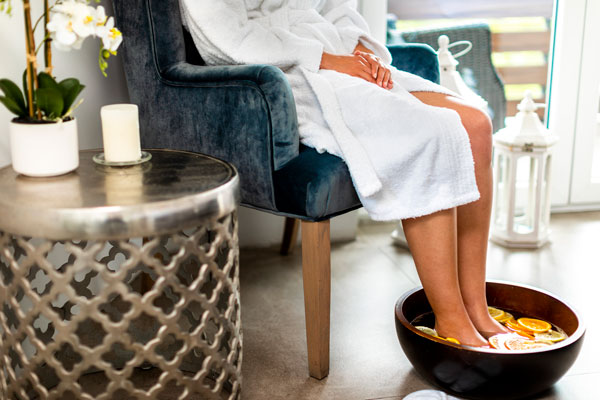
If you have diabetic nerve damage, be careful to avoid using hot water to warm your feet as it may be difficult to judge just how hot the water is. This can often leads to accidental burns.
Maintain a comfortable temperature
While a comfortable interior temperature may vary from person to person, maintaining the indoor temperature can help your circulation. You may consider a good temperature anywhere from 68 to 82 degrees Fahrenheit or 20 to 28 degrees Celsius.
Give yourself a quick massage
Briskly massaging your feet can help to bring back some of the lost circulation. Check out this article for 14 Leg Massage Ideas – one could help enhance your circulation and relieve symptoms you feel!
Spice up your diet
Believe it or not, there are a few ingredients in the kitchen that can help keep your feet nice and toasty. When integrated into your diet, garlic, ginger, and cayenne pepper may be just what you need to prevent poor circulation.
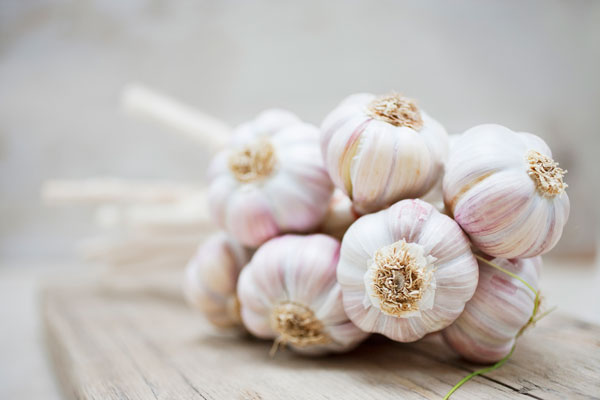
Garlic has nutritional benefits that can help combat some of the issues brought on by poor circulation. It’s known for its immune-boosting elements as well as its health benefits for your benefits. Since garlic can improve blood cholesterol levels, add it in as a part of your “prevention measures.” You’ll decrease the likelihood of blood platelet clumping, and your feet will be in great shape. Here are some recipes that you may want to try…
Like garlic, keeping ginger in your pantry may be just the trick you need up your sleeve. You can add it to soups, stews or stir fries for a healthy kick. It’s been known to improve the circulation in both hands and feet. It’s often used in the treatment of chilblains – the painful inflammation of small blood vessels in the skin when exposed to cold air – and frostbite. Here are some awesome ginger recipes you can keep on hand.
Cayenne pepper powder is not only known as a flavorful seasoning for your food. Research also indicates that it helps to increase circulation, improve blood vessel strength, and can reduce plaque buildup in your arteries. Here are some awesome recipes with cayenne pepper to incorporate into your diet. Warm feet are just a delicious meal away!
- Homemade Cayenne Pepper Sauce
- Cayenne Pepper Tea With Ginger
- Chicken Stewed in Paprika and Cayenne Pepper Sauce
Heating pads or hot water bottles
If you find that you have trouble sleeping or concentrating on tasks due to cold feet, you may enjoy a heating pad or hot water bottle at the foot of the bed. This will not only keep you warm but also soothe your sore muscles after a long day.
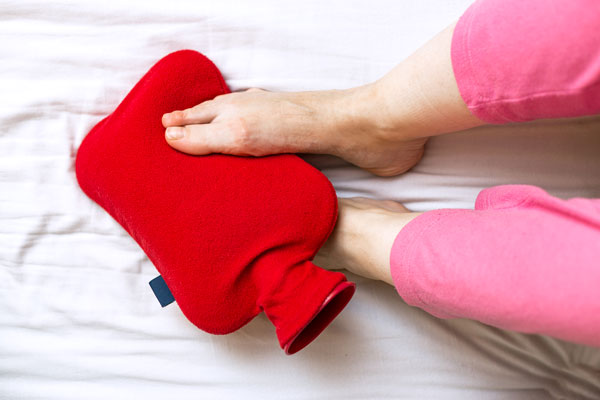
You may find that it’s more effective to use the heating pad on your back than it is on your feet. This is for the same reason that you want to ensure that your core is warm when in cold weather. Using a heating pad on your back can all your blood vessels to open up and allow more blood flow to your legs.
Reduce stress or anxiety
You may not realize, but when you’re in high-stress situations, your circulation drops. One of your body’s natural responses to stress and anxiety is adrenaline. Adrenaline causes blood vessels to constrict, which ultimately decreases the flow of blood to the outermost areas of the body. If you’re experiencing stress in your professional or personal life, you may find that your circulation is faltering. In this case, reducing stress and tension may help to boost it.
You can reduce stress by getting more exercise (another way you can help your circulation!), increasing the number of hours of sleep you get per night, journaling, trying some relaxation techniques, practicing yoga, reading a book, taking a bath, spending time with loved ones, laughing, avoiding procrastinations, and plenty more! Prioritizing self-care is important for a healthy lifestyle and can help reduce symptoms like poor circulation.
Decrease your caffeine consumption
Did you know that your consumption of tea, coffee, soda or energy drinks may be causing your decrease in circulation? Caffeine constricts blood vessels and decreases peripheral circulation, leading to a rise in blood pressure. When you increase your caffeine intake, your body releases stress hormones like cortisol. This triggers your body’s “fight or flight” response and thus your blood pressure. Just a simple reduction in the beverages your drinking can have a drastic impact on your blood pressure and solve that pesky cold feet problem. Who would have thought!
Get up and get moving
You don’t have to be an exercise fanatic to uncross your legs, take a break at work, and simply move every hour. Now, it certainly helps if you exercise on a regular basis. This, of all things, will help get your blood pumping and help to regulate your circulation. However, if you find that you just don’t have the time or ability to exercise for hours each day. Don’t worry. Start simple and just make a commitment to get up and walk around the office or block every hour. This can help to reduce issues more than realize.
Check for any issues
Be sure to check for any issues with your feet regularly. This includes blisters, cuts, wound or other troubling changes. Especially if you’re utilizing heating pads, hot water bottles or footbaths, you’ll want to be careful that you’re not accidentally burning your feet while trying to keep them warm.
Taking care of your feet involves keeping them clean, dry, and elevated. If you have any concerns, consult your healthcare provider immediately so that you can address the issue before anything becomes worse.
Final thoughts
Poor circulation is a common symptom that always has an underlying condition. Don’t hesitate to see a doctor so that they can provide treatment for any serious condition and help you find ways to relieve your symptoms. When conditions are caught early on, they are always treatable. When they’re left untreated, they can lead to life-threatening complications. The tips in the article will not only help you keep your feet warm but will also help you lead a healthier lifestyle overall!
When in doubt, remember to warm up your core and get moving. This can help increase your circulation and send a signal to your body that it’s okay to increase blood flow to your extremities. Stay warm!
